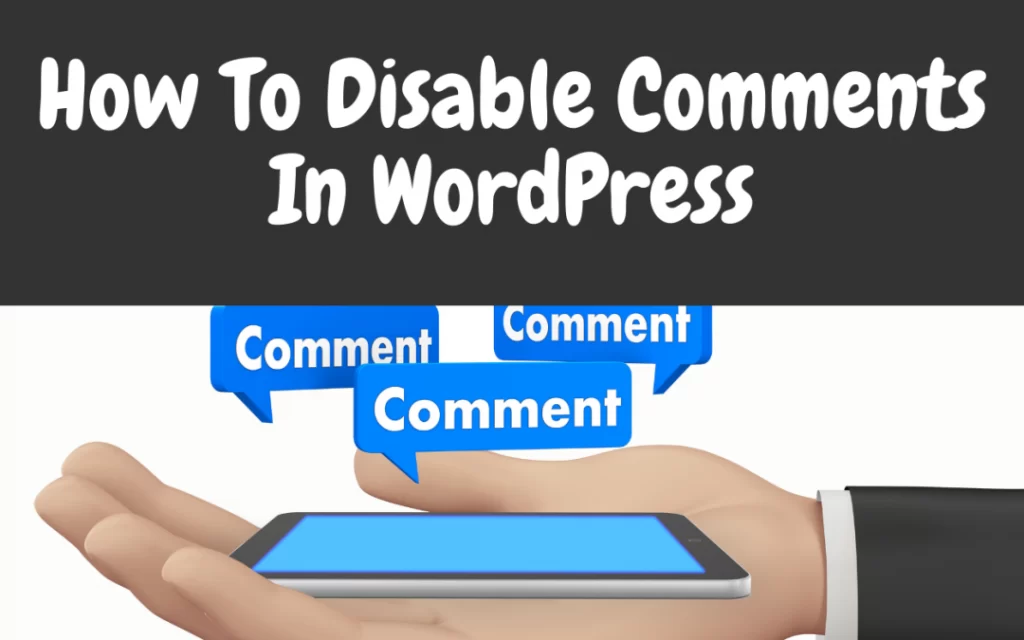Disable Comments in WordPress

Running a WordPress website comes with a lot of decisions, and one of them is whether or not you want to allow comments on your posts. While comments can encourage interaction and engagement, there are times when you might want to disable them—either to avoid spam, maintain a cleaner design, or just because your content doesn’t require them.
In this blog post, we’ll walk you through how to disable comments in WordPress using tools like cPanel, DirectAdmin, Softaculous, and we’ll make sure your site is secured with SSL throughout the process.
Table of Contents
Step 1: Accessing Your WordPress Admin via cPanel or DirectAdmin
Before you can make any changes, you need to log into your WordPress admin panel. Most hosting providers offer cPanel or DirectAdmin as their control panels, and both provide easy access to WordPress.
Using cPanel:
- Log into your cPanel account (usually found at yourdomain.com/cpanel).
- Scroll down to the Software section and find Softaculous. This is a one-click app installer for WordPress and other CMS platforms.
- Inside Softaculous, find your WordPress installation and click on the admin login button.
Using DirectAdmin:
If your hosting provider uses DirectAdmin, the process is quite similar:
- Log into your DirectAdmin account.
- Navigate to Extra Features and click on Softaculous.
- From there, locate your WordPress installation and click the admin login.
Now that you’re inside your WordPress dashboard, you’re ready to disable comments.
Step 2: Disabling Comments in WordPress
WordPress makes it easy to control whether or not comments are allowed on your site. Here’s how you can do it:
Disable Future Comments:
- In your WordPress dashboard, navigate to Settings > Discussion.
- Under the Default article settings, uncheck the option that says “Allow people to post comments on new articles.”
- Scroll down and click Save Changes.
This will prevent comments on any new posts or pages you create. However, it won’t affect the existing posts that might already have comments enabled.
Disable Comments on Existing Posts:
To disable comments on posts you’ve already published, follow these steps:
- Go to Posts > All Posts.
- Select the posts you want to edit by clicking the checkbox next to each one, or select all posts by clicking the top checkbox.
- In the Bulk Actions dropdown, choose Edit and hit Apply.
- In the bulk edit screen, set the Comments option to Do not allow.
- Click Update to save the changes.
This will turn off comments on all selected posts.
Step 3: Using Plugins to Disable Comments Site-Wide
If you’re managing a larger site or simply prefer an easier solution, you can use a plugin to disable comments across your entire WordPress installation. This is a great method for beginners and can be done easily through Softaculous.
How to Install a Comment-Disabling Plugin:
- Go to Plugins > Add New in your WordPress dashboard.
- Search for Disable Comments by WPDeveloper. This is a highly popular and reliable plugin.
- Install and activate the plugin.
- Once activated, navigate to Settings > Disable Comments. Here, you can disable comments site-wide or for specific content types like posts or pages.
Using this plugin is the easiest way to globally control comment settings without manually editing each post.
Step 4: Securing Your WordPress Site with SSL
While disabling comments, it’s also important to keep your site secure by ensuring you have SSL enabled. SSL (Secure Sockets Layer) is essential for encrypting data between your website and your visitors, helping you protect sensitive information and improve your site’s SEO.
Most hosting providers offer free SSL certificates, often through Let’s Encrypt, which you can easily enable via cPanel or DirectAdmin.
Enabling SSL in cPanel:
- Log into cPanel.
- Navigate to the Security section and click on SSL/TLS.
- If your hosting provider offers free SSL (such as Let’s Encrypt), you can install and manage SSL certificates from here.
Enabling SSL in DirectAdmin:
- In DirectAdmin, go to Account Manager and click on SSL Certificates.
- Select the option to use a free certificate from Let’s Encrypt.
- Follow the prompts to install the SSL certificate.
After installing SSL, ensure that your site is loading with HTTPS in the browser (you should see a padlock symbol next to your URL). If not, you may need to adjust your WordPress settings under Settings > General to update your site URL to HTTPS.
Conclusion
Disabling comments in WordPress is easy and can help you maintain control over your content and user interaction. Whether you’re accessing your WordPress site through cPanel, DirectAdmin, or managing installations via Softaculous, the process is similar. And while you’re making these changes, don’t forget to ensure that your website is secured with SSL to keep your site and its visitors safe.
By following this guide, you’ll have a cleaner, more secure WordPress site in no time!